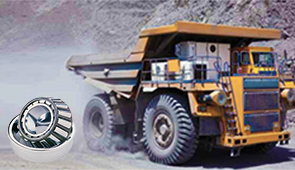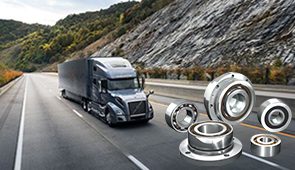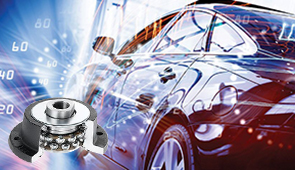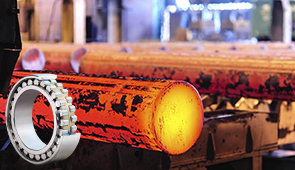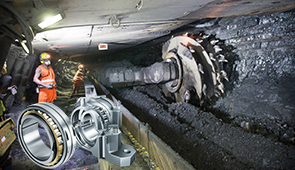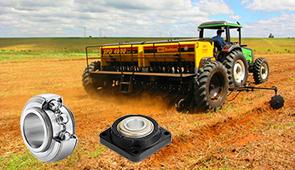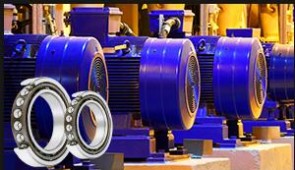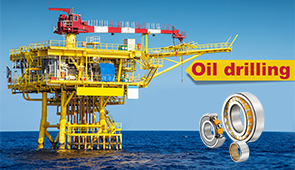Expertise in Specialty Ball Bearings: A Deep Dive into High-Performance Solutions
Specialty ball bearings are critical components in the design and operation of advanced machinery, enabling systems to function with precision, speed, and durability. From aerospace applications requiring extreme reliability to medical devices demanding micrometer-level accuracy, these high-performance solutions are engineered to meet the most demanding requirements. This article provides an in-depth exploration of specialty ball bearings, focusing on their design, material composition, and industry-specific applications. Whether you’re an engineer, designer, or industry professional, this guide will offer valuable insights into how these advanced components drive innovation and efficiency in modern mechanical systems.
What Are the Different Bearing Types for Industrial Applications?
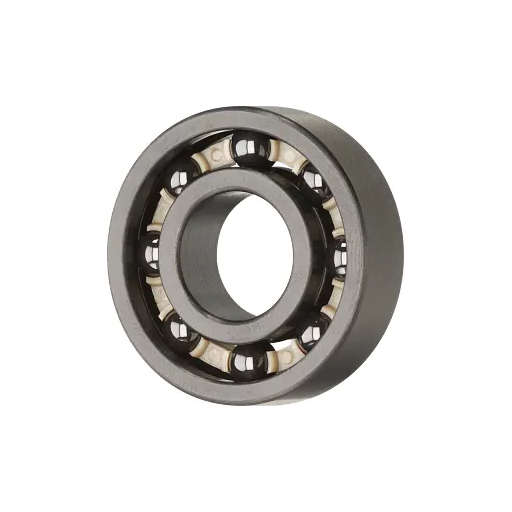
Understanding Common Bearing Types
Bearings are essential machine parts in an industry, made in such a way as to allow for rotation or translational movement of parts. It is well known that in any moving system, friction must be minimized. Each kind of bearing has a specified performance and is designed for its load-bearing capacity, speed, and the environment. The following are considered the most popular bearing groups in industry:
- Ball Bearings: This is one of the most popular bearing types because it is very effective. It takes advantage of the spherical geometry of the ball to reduce friction for radial and axial loads. These bearings are ideal for applications with high rotational speed, such as in electric motors and precision instruments. Their size and cost are very favorable, and because they provide low friction, they are used everywhere from space activities to electronic appliances.
- Roller Bearings: In contrast with ball bearings, roller bearings use cylindrical or tapered rollers. These rollers allow the load to be distributed over a larger area so they have greater load sustaining capacity than ball bearings. These bearing types include cylindrical, tapered and spherical roller bearings. These are widely used in heavy machines, conveyors, and industrial gearboxes.
- Thrust Bearings: Automotive applications, such as in automotive transmissions and revolving shafts, require high axial force, which thrust bearings are able to provide. They are further classified into several types such as ball thrust bearing and roller thrust bearing which are distinguished by their operating parameters and load conditions.
- Needle Bearings: A different type of needle bearing is roller bearings, which use long and thin rollers, also known as needles, to improve load bearing capacity in small spaces. Their reduced cross-section fits in limited spaces, making them suitable for car parts such as universal joints and components in the transmission system.
- Plain Bearings: Also known as bushings, plain bearings are designed to be the simplest bearing type and do not use rolling parts like balls or wheels, relying instead on a sliding motion. Their simplicity, dependability, and low cost make them appropriate for applications where fast and precise operations are not essential. Their construction from bronze, polymers, and composite materials improves performance under many conditions.
- Magnetic Bearings: Turbo-machines and advanced energy systems use magnetic bearings, which replace the bearing and support shafts with electromagnets to suspend the shaft without contact. This means there is no wear and enables high speeds. Operating without friction also means less maintenance is needed.
Careful selection of bearing types during their specification allows industries to achieve maximal performance, improve mechanical dependability, and increase the lifespan of the equipment. When it comes to assigning bearings in industrial applications, attention to detail is a must in terms of load, speed, alignment, and conditions in the environment.
Exploring specialty bearings for Unique Needs
Specialty bearings are crucial in certain sectors where standard bearings fail to deliver, and vary depending on the operational obstacles presented. These specially engineered components have additional protective materials, special designs, or specific added features enabling them to endure extreme environments, high loads, or intricate mechanical requirements. Some of the most common examples include ceramic bearings, magnetic bearings, and self-lubricating bearings.
- Ceramic Bearings: These types of bearings make use of materials like silicon nitride which allow them to possess very high hardness, corrosion resistance and thermal stability. The applications for these bearings include precision machinery and aerospace systems due to their low weight and reduced friction. Moreover, addition of non-magnetic property allows use of such bearings in equipment sensitive to electromagnetic interference.
- Magnetic Bearings: These types of bearings are useful where minimal friction and ultra-high speed are needed due to their ability to support rotating components without physical contact using magnetic fields. This type of bearing finds extensive use in power generation turbines and vacuum pumps, as well as any clean room environment, due to its ability to operate in vacuum and contamination-free conditions.
- Self-Lubricating Bearings: These bearings contain solid lubricants or are made from composite materials which reduces the need for external lubrication. Their ability is specifically useful in food processing equipment which require constant maintenance and where lubrication would result in contamination.
Selecting and integrating specialized bearings that align with their operational needs enables industries to enhance system effectiveness, lower the rate of operational halts, and increase the lifespan of equipment. Ongoing improvements in bearing technology are allowing for increasingly sophisticated engineering problems to be solved with evermore stringent regulatory and performance benchmarks to be met.
Choosing the Right Bearing for Your Application
Following criteria such as lifespan of the bearing and performance are of extreme importance when choosing a bearing. For example, construction machinery uses heavy-load bearings where bearings that handle large radial and axial loads are most suitable while electric motors and turbines are high-speed applications needing precision friction bearings.
Operational efficiency is an indicator with high relevance to the conditions facing the working environment. Distinct advantages are presented by different materials. Chemically aggressive environments require wet stainless steel bearings, while high-temperature settings need highly durable ceramic bearings. Alongside these factors comes the need to consider lubricants paired with their application time intervals. Lubrication is a make-or-break feature. If bearings are poorly lubricated, the expected lifespan of the bearing will greatly decrease. On the other hand, if over lubricated, the efficiency will drop, leading to unnecessary expenses.
Predictive maintenance practices are undergoing significant changes because of internal features such as sensors embedded in the bearings. With the help of these technological advancements, along with fundamental selection principles, engineers are able to optimize bearing functionality while reducing unplanned operational halts throughout many applications.
How to Consult Experts for High-Performance Ball Bearings?
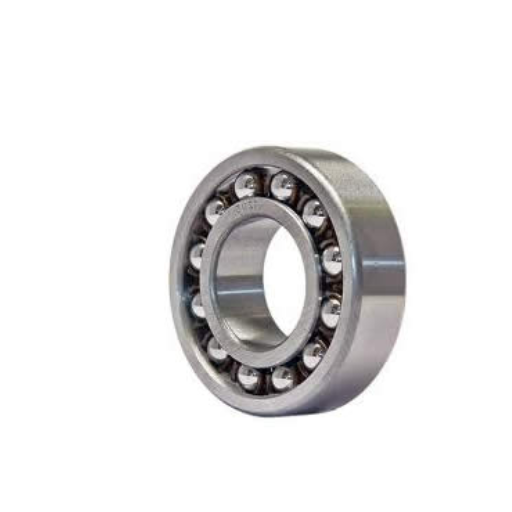
Evaluating High-Performance Ball Bearings
Evaluating high performance ball bearings must consider mechanical, material and environmental aspects together. Other evaluation criteria include: load capacity, speed rating, durability and external temperature and contamination resistance. Bearings are often evaluated for early wear and defects using vibrational analysis and thermal imaging.
The selection of material is equally important because modern high performance bearings often employ new alloys or hybrid combinations, for example, ceramic rolling elements with steel races. Performance characteristics such as friction coefficient, lifespan, and operational endurance are technologically enhanced during demanding conditions. Moreover, the increasing precision of manufacturing processes improves the achieved tolerances, effectiveness, and dependability.
Critical operational data becomes accessible to engineers with the addition of realtime monitoring systems like those using IoT-enabled sensors. This data provides insight into temperature, lubrication and rotational speed of the machinery. Comparison of this data with industry standards allows operators to make data-driven decisions aimed at optimizing performance, minimizing downtime, and extending bearing life. Through systematic evaluation, modern organizational equipment is confirmed to function with maximum efficiency for industrial application demands.
Leveraging Industry Expertise for Customized Solutions
In the modern global industrial environment, custom solutions are only possible with deep industry knowledge. Businesses get tackle solutions due to sector-specific intricacies based on years of experience, which helps identify critical business issues. This provides aligned solutions, eliminating operational and technical silos that enhance productivity and reusability. The deep sector knowledge of business also aids in solutions aligned to goals, while anticipating roadblocks aids in proactive strategies instead of reactive ones.
Integrated solutions blending deep sector knowledge with advanced analytics and technologies yield designed precision. Operational disruptions and lifecycle costs are minimized when organizations can manage wear and tear proactively. Under bespoke approaches, applying dedicated technologies such as IIoT (Industrial Internet of Things) systems provides otherwise unobtained insights into operational structures beyond generic methodologies.
Maximum effectiveness of customized solutions requires alignment with shifting dynamic market trends and global industry shifts. From adapting strategies to regulations, sustainable practices, or even the latest automated infrastructure, integration of real-time data and technical expertise is crucial in maintaining a competitive edge. Meeting industrial standards requires organizations to embed ongoing learning, strategic innovation, and technical rigor into solution designs, ensuring long-term reliability and operational excellence.
What Makes Ceramic Ball Bearings Unique?
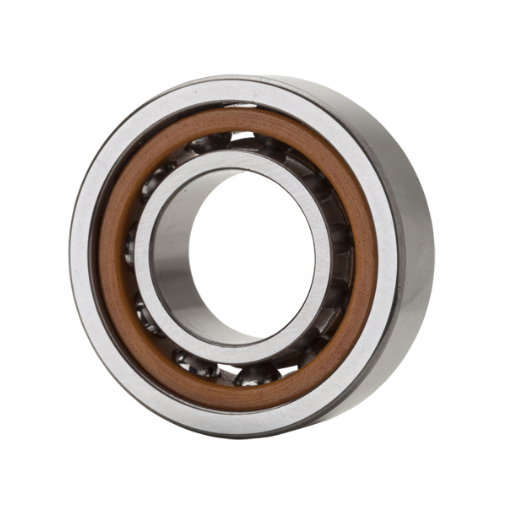
The Advantages of Ceramic Materials
Traditionally, ball bearings were made from metal. However, the properties of ceramic materials, especially those used for ball bearings, set them apart from metal. Their most distinguishing feature is high hardness, which is frequently more than iron. As a result, ceramics ball bearings will be wear and deformation resistant. The additional advantage is that soft ceramics help to reduce the weight of the components which can help to lower the rotational inertia, increase efficiency and help to decrease energy costs consumed by the machines.
Moreover, ceramic materials have good durability, which makes them suitable for high-power operations. Also, they possess lower-density systems, helping to produce light-weight components. In protective chemistries and other aggressive environments, ceramics will help ensure integrity for long periods due to their hard-wearing resistance to erosion, corrosion, and other chemical processes.
An additional benefit of using ceramics is the excellent electrical isolation characteristics. Unlike metal bearings, which can spout a plethora of various electrical concerns including electrical pitting and arcing, electric motors and other high-speed machinery are devoid of these issues when ceramic bearings are used. As a result, these components are largely employed in high-precision applications where insulation is critical.
The combination of these characteristics and manufacturing developments have made ceramic materials a preferred option in multiple fields because they offer a combination of functionality, durability, and dependability that is unrivaled by most conventional materials.
Comparing Ceramic and Steel Ball Bearings
Ceramic ball bearings and steel ball bearings are different in material, performance, and application. A traditional ceramic bearing is made from silicon nitride (Si3N4) or zirconium oxide (ZrO2) because these are more advanced ceramic materials. Their use in construction ensures waters resistance which is quite useful in traditional bearings. Their construction also makes them lighter, harder, and heat-resistant. This means ceramic bearings can be used in situations requiring extremely high speeds along with exceptional precision. This greatly increases their usefulness in high-velocity applications.
As for steel ball bearings, their construction uses alloy steel which is more user-friendly and costs effective. This does increase their overall price compared to ceramic bearings—but also means steel bearings can be worn down and corroded over time. These issues are exacerbated in harsh environments filled with moistness. Fortunately, special treatments aided with advanced lubricants can enhance their less demanding operational life.
One of the most prominent distinguishing qualities is the difference in electrical insulation properties. Non-conductive material works worse in preventing damage such as pitting or arcing. Unfortunately, this gives steel ball bearings an advantage from guidance loss.
From a performance perspective, ceramic ball bearings offer greater longevity, low maintenance, and more efficient performance in extreme conditions compared to other options. On the other hand, steel ball bearings tend to be used in applications with modest rotational speeds and loads due to their lower cost. These advantages emphasize the tailor-made nature of each type to fulfill certain operational demands and environmental factors.
Applications of Ceramic Ball Bearings in Industrial Settings
The extraordinary stability, heat resistance, and performance of ceramic ball bearings make them a crucial part of many industrial uses. One of the most important uses includes their application to high-speed machinery as their lower weight and reduced friction improve efficiency. For example, the aerospace and defense industries use ceramic ball bearings in jet engines and gyroscopic systems due to their extreme temperature and corrosive resistance.
Moreover, in manufacturing parts of CT scanners and robotic arms, the non-magnetic and electric insulating qualities of some ceramic materials are pivotal. These attributes guarantee that sensitive electronic parts do not collapse and that interference is kept to a minimum during operations.
The other major use is in the renewable energy sector, especially in wind turbines. By preventing abrasion and wear caused by changing loads and severely outdoor conditions, ceramic ball bearings maximize the efficiency and durability of turbine parts. This allows for more maintenance free periods and greater energy production overall.
At last, the chemical processing industry uses ceramic bearings for extreme chemical and high-pressure applications. This type of material offers resistance to corrosion which helps to extend service life and consistent performance, minimizing the service interruption and operational cost. In such disparate fields, the ceramic ball bearings show remarkable adaptability and multifunctionality sophistication which sustain modern industrial needs.
How Do Deep Groove Ball Bearings Enhance Product Performance?
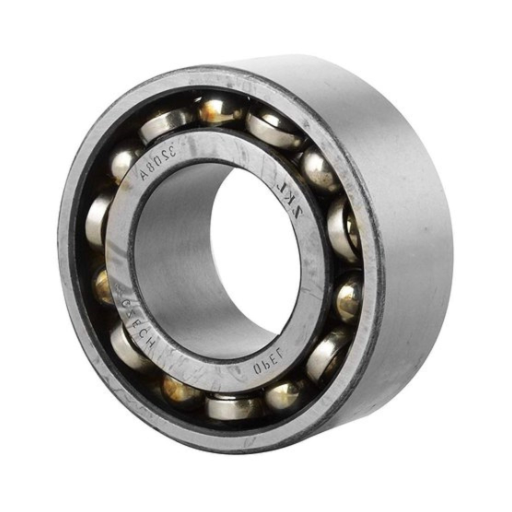
The Design and Functionality of Deep Groove Ball Bearings
Deep groove ball bearings have the efficient capability of coping with radial and axial loads simultaneously. This makes it one of the most versatile, popular, and used bearing types across many industries. They have deep, unmolded race grooves on both the inner and outer rings, which allow rotation with minimal friction and wear. As the steel and ceramic balls are painstakingly manufactured, they’re paired with deep grooves to achieve exceptional performance in high-speed applications.
The composition of deep groove ball bearings and their functionality is best described strikingly. The cages made out of polymer, brass or steel, efficiently place the balls on the raceways; hence, load distribution is more even which minimizes misalignment. Even when the bearings are subjected to dynamic and oscillating loads, such structures greatly enhance the operational ресурс durability and dependability of the bearings.
Depending on the lubrication and materials used, deep groove ball bearings can reach speeds of over ten thousand RPM in specific configurations, outpacing many types. The addition of lubricants, like grease and oil, improves functional and hydrodynamic effectiveness by lowering temperature, helping to extend life span. Because of these reasons, deep groove ball bearings are critical components in electric motors, automotive transmissions, industrial gearboxes, and even appliances due to their responsiveness in demanding conditions.
Modern machines and advanced technologies have a special impact on the design and technology of the bearings. New sealing technologies, for example, enhance the resistance to contamination. Advanced machining and fabrication also provide better rotational accuracy, tighter tolerances, and lower the overall rotor imbalance. These enhancements exemplify the increasing reliance on bearings in modern machinery, where high durability, operational efficiency, and low maintenance are essential.
Understanding the Performance Benefits
Bearings, as part of aerospace tools and other machinery, enhance overall performance, which is critical to the proper functioning of mechanical systems. For instance, friction is utilized to an optimal degree, resulting in more efficient energy consumption, reduced component wear, and increased lifespan. Every bearing undergoes precision engineering processes to ensure it can withstand extreme forces while rotating smoothly, giving it reliability during tough operational circumstances.
Furthermore, some other advanced materials like ceramics and composites have improved the thermal and corrosion resistance of bearings. This allows them to function within extremely high or low temperatures and even in chemically hostile environments, further broadening their scope. Modern bearings also have better lubrication systems, which lead to lower maintenance effort and reduced operating expenses across the board.
Advanced tools are essential in carrying out high performance jobs which require even greater efficiency. Every new technological advancement in bearing tools leads to markers of dependability and improves the reliability of complex mechanical systems.
Common Applications in Industrial Part Manufacturing
A diverse selection of industrial processes makes use of bearings because they allow for precise control of motion and power in machinery and equipment. One major use is the CNC (Computer Numerical Control) machines that require high-precision bearings for problem-free placement and steady holding of sophisticated parts during the machining process. In the same way, conveyor systems use bearings to reduce friction and wear in material handling operations to ensure smooth and uninterrupted processes.
Another important use is in the automotive industry that makes use of bearings in the robots and assembly line to improve operational efficiency and product uniformity. For the industries that operate in heavy-duty manufacturing like aerospace and shipbuilding, bearings withstand extreme loads and the relentless onslaught of intense temperatures ensuring the durability and reliability of large-scaled machines.
Also, new technologies of materials provide parts like ceramic and composite bearings with greater resistance to corrosion and wear, making them useful in environments with aggressive chemicals or high moisture. Together with these innovations, the telescoping arms that incorporate IoT sensors for predictive maintenance determine not only the operational but also the failure thresholds of the machine, thus avoiding downtime while optimizing productivity and extending bearing life.
Why Choose Xiros for Your Bearing Needs?
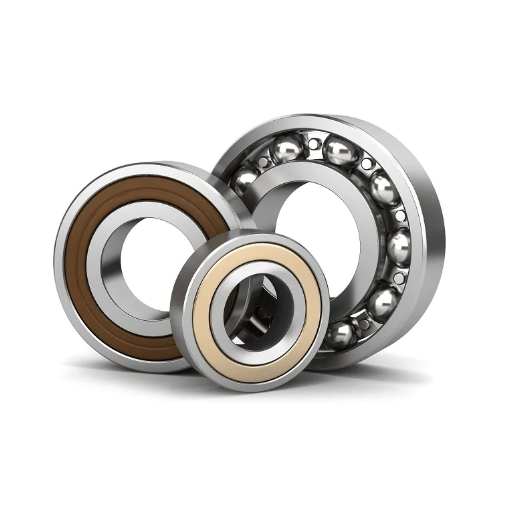
Exploring the Unique Features of Xiros Bearings
The unique design and materials used in Xiros bearings ensure optimal performance for all applications. These polymer bearings are self-lubricating, eliminating additional needle grease, which could cause contamination during the manufacturing process for sensitive items like pharmaceuticals or food processing. Additionally, Xiros self-lubricating bearings are made of high-grade polymers, which offer exceptional wear resistance to chemicals and temperature extremes, ensuring reliability and longevity.
An outstanding feature of Xiros bearings is their lightweight construction. These bearings have a lighter construction than traditional metal bearings, which leads to reduced overall system weight. Xiros bearings also experience exceptional low-friction sliding, which reduces power consumption and increases the smoothness of the mechanical movements. These qualities are favorable for systems aimed at precision and efficiency, like automation systems.
Xiros bearings also undergo rigorous testing to guarantee their conforming capabilities for various boundary conditions while maintaining consistent load capacities and performance. Their broad compatibility with various shaft materials, such as stainless steel and aluminum, adds to the versatile uses across industries. Along with maintenance-free requirements, self-lubricating bearings give industries high operational standards at a low cost.
Comparing Xiros with Other Bearing Brands
While comparing the performance of Xiros bearings with other brands, certain performance metrics and distinct features emerge. Differing from conventional metallic bearings, Xiros polymer ball bearings achieve full operational functionality without external lubrication, which minimizes maintenance costs and eliminates the risks associated with lubricant contamination in sensitive environments like food manufacturing and pharmaceuticals. This advantage makes Xiros a preferred manufacturer for applications with rigorous hygiene requirements.
Moreover, the lightweight and durable polymer construction of Xiros bearings contributes to reduced energy consumption in high-dynamics scenarios where lower rotational inertia is favorable. Also, Xiros bearings offer unparalleled chemical resistance as well as superior operating temperature ranges to many conventional metallic or ceramic bearings. Unlike other brands that depend on metallic systems, Xiros’ self-lubricating, wear-resistant materials excel in corrosive or extreme conditions where other brands struggle.
From a cost-competitiveness perspective, Xiros bearings stand out the most. The long operational savings arising from Xiros products’ prolonged service life and maintenance-free operation can dramatically decrease the total cost of ownership, in contrast to traditional bearings that are often subject to cyclic lubrication or replacement. All in all, these features highlight and appreciate Xiros’ innovative engineering and ability to provide efficient, high-performing solutions designed for diverse industrial applications.
Frequently Asked Questions (FAQ)
Q: What does it mean to specialize in specialty ball bearings?
A: Specializing in specialty ball bearings means focusing on designing, manufacturing, and providing high-performance solutions tailored to meet specific application needs. This specialization allows a company to offer expertise and innovation in creating reliable and efficient bearings for various industries.
Q: What types of special bearings are available?
A: There are several types of special bearings available, including series ball bearings, which are designed to handle specific loads and speeds.
Q: How can a company help you select the right ball bearing?
A: A company can help you select the right ball bearing by considering factors such as load requirements, speed, temperature, and environmental conditions. They can also provide guidance on the inner and outer diameters and material selection to ensure the best fit for your application.
Q: Can specialty ball bearings be customized for specific applications?
A: Yes, specialty ball bearings can be customized for specific applications. This includes adjusting the dimensions, materials, and design features to meet the unique needs of a customer’s project.
Q: What information is needed when designing a new ball bearing?
A: When designing a new ball bearing, it is important to consider factors such as load capacity, speed requirements, dimensions, material selection, and the specific environment in which the bearing will operate.
Q: Are there any special bearing materials like PEEK available?
A: Yes, special bearing materials like PEEK (Polyether ether ketone) are available. PEEK is known for its high-temperature resistance, strength, and chemical resistance, making it suitable for demanding applications.
Q: What is the importance of understanding the inner and outer diameters in ball bearings?
A: Understanding the inner and outer diameters is crucial for ensuring that the ball bearing fits properly in its housing and on the shaft. Correct diameters are essential for the bearing to function reliably and achieve optimal performance.
Q: Why is having a wide selection of series ball bearings important?
A: Having a wide selection of series ball bearings is important because it allows customers to find the most suitable bearing for their specific application needs, whether it requires handling high loads, operating at high speeds, or functioning in harsh environments.
UCTH213-40J-300 with Setscrew(inch)
CNSORDERNO: Normal-duty(2)
TOGN: UCTH213-40J-300
SDI: B-R1/8
SD: 2 1/2
UCTH212-39J-300 with Setscrew(inch)
CNSORDERNO: Normal-duty(2)
TOGN: UCTH212-39J-300
SDI: B-R1/8
SD: 2 7/16
UCTH212-38J-300 with Setscrew(inch)
CNSORDERNO: Normal-duty(2)
TOGN: UCTH212-38J-300
SDI: B-R1/8
SD: 2 3/8
UCTH212-36J-300 with Setscrew(inch)
CNSORDERNO: Normal-duty(2)
TOGN: UCTH212-36J-300
SDI: B-R1/8
SD: 2 1/4
UCTH211-35J-300 with Setscrew(inch)
CNSORDERNO: Normal-duty(2)
TOGN: UCTH211-35J-300
SDI: B-R1/8
SD: 2 3/16
UCTH211-34J-300 with Setscrew(inch)
CNSORDERNO: Normal-duty(2)
TOGN: UCTH211-34J-300
SDI: B-R1/8
SD: 2 1/8









